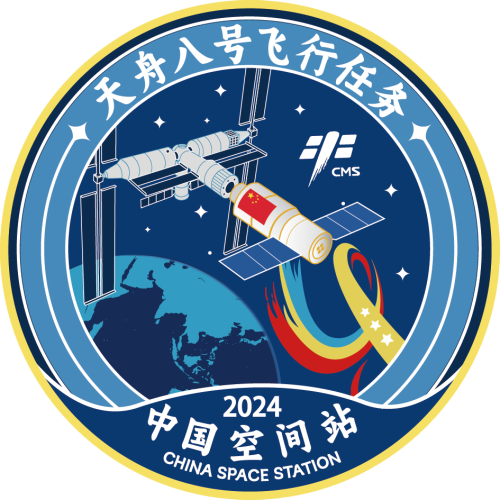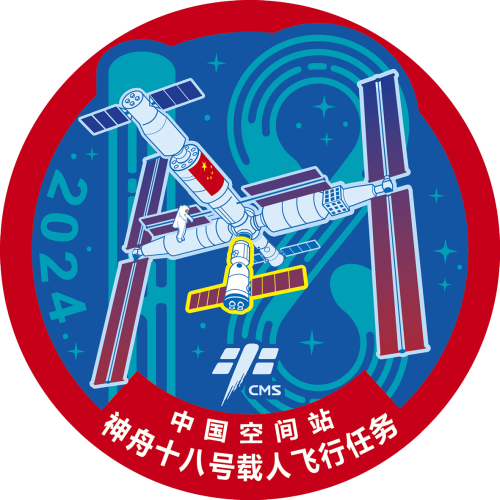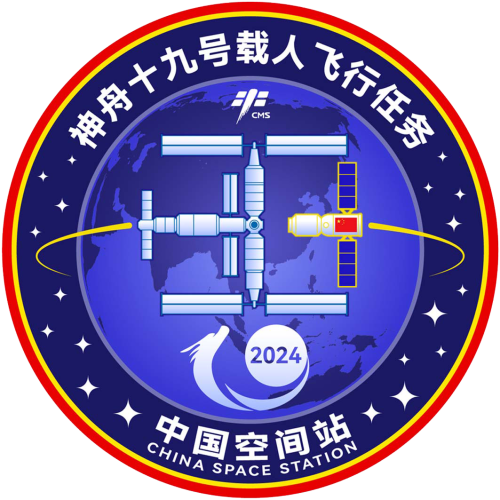
China's next supply ship – the Tianzhou-7 – is now being readied for launch early next year to the country’s three-module space station.
The China Manned Space Agency (CMSA) said on Sunday the cargo spacecraft will undergo assembly, testing and other tasks before it is launched from the Wenchang Spacecraft Launch Site in south China's Hainan Province in early 2024.
CMSA also released logos for four launch missions that will be conducted in 2024: The Tianzhou-7 and Tianzhou-8 cargo spacecraft, and the Shenzhou-18 and Shenzhou-19 crewed spaceflight missions.
Related: China's next cargo spacecraft arrives at launch site ahead of early 2024 liftoff
More modules
Since initial construction of the orbital outpost was completed in 2022, China's space station has entered a phase of application and development that will span more than 10 years.
During that time, two piloted spacecraft and one or two cargo spacecraft will be launched each year, the CMSA has previously reported.
According to several Chinese space sources, Tiangong is set to expand to have a cross-shaped configuration. Also, the facility may include additional modules to double its size in the coming years.
The station currently consists of three modules: the Tianhe core module and the Wentian and Mengtian lab modules.
Cross-shaped station
According to Lin Xiqiang from CMSA, China will launch an extension module at an appropriate time and upgrade the basic configuration of the space station from the current 'T' shape to a cross shape.
In early October at the 74th International Astronautical Congress, Zhang Qiao of the Academy of Space Technology (CAST) stated the station may expand to six modules from the existing three.
Yang Yuguang, vice chair of the space transportation committee at International Astronautical Federation said the additional fifth or sixth module would be reserved as space labs.
The Tianhe core module is able to manage and control the power supply and maintain the orbit of a station that's as heavy as 180 tons, according to Yang.
By adding another module that also means additional docking and berthing ports at the station – there are three at the moment. The new module would also allow the possibility of connecting modules from other countries to China's station.
Logo lexicon
Word from the CMSA is that the logo of the Tianzhou-7 mission features the number "7", with an image of the Tianzhou-7 cargo craft in the middle, symbolizing the advancing space industry of China and heartfelt blessing for this mission. The Tianzhou-7 cargo craft is scheduled to be launched from the Wenchang Spacecraft Launch Site in early 2024. The spacecraft has been transported to the launch site, and will go through tests after the final assembly.

The logo for the Tianzhou-8 mission combines the number "8" with the tail flame of the spacecraft. The flame in the three colors of red, yellow and blue signifies the inclusiveness of China's space cause and its contributions to the diversified and harmonious development of the world's space industry.

The logo for the manned Shenzhou-18 mission centers on China's space station, and highlights the place where the Shenzhou-18 spaceship will dock with the space station with a yellow line. The logo takes the number "18" as its backdrop.

The logo for the Shenzhou-19 mission incorporates the image of an ascending dragon, a legendary auspicious creature in Chinese mythology.

The 19 stars dotting around the logo signifies prosperity of China's space industry. The CMSA has received more than 320 submissions from over 200 organizations and individuals across China since the launch of the logo call on Aug. 31 this year.







